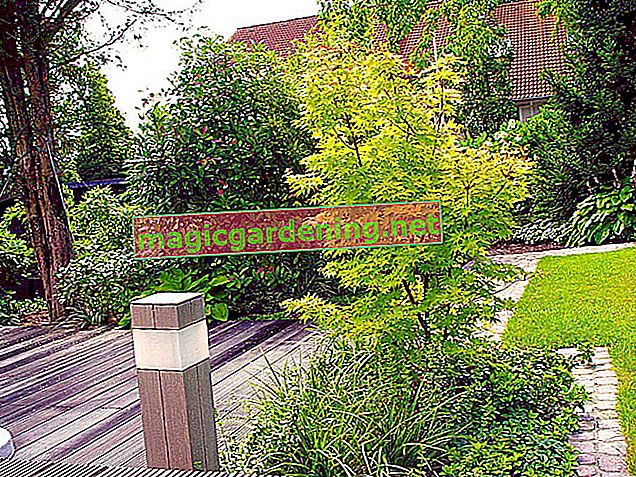
Selection criteria for the small house tree
Due to its size and habit - the gardener calls this habitus - the house tree determines the overall appearance of your garden. In a small garden, trees should therefore be planted as low as possible with a maximum height of eight to twelve meters. But not only the height of growth plays a decisive role in the selection of the variety, the habitus should also not be disregarded: For example, a hornbeam is not suitable for small gardens, as it becomes very wide. Instead, you can plant a narrow columned hornbeam, which only really comes into its own when there is little space. Globular trees also grow rather weak, remain compact and are particularly suitable for the front yard.
also read
- Spherical trees are eye-catchers in the garden: the most beautiful varieties
- Slim trees for the small garden or front yard - the most beautiful varieties
- The most beautiful trees that do not lose leaves
Criteria for choosing the small house tree at a glance:
- existing site and soil conditions
- estimated final size / height
- Expected growth width when fully grown
- annual growth increase (slow growing / fast growing
- Growth habit (narrow, spreading, rounded, broadly bushy ...)
- Special features (flowers, fruits, leaf color and shape, evergreen ...)
The most beautiful varieties for the home garden
Even a small house tree should not be squeezed between the house, hedge or boundary wall and other plants. Give the piece of jewelery enough space so that it can fully develop its effect. Most of the trees stand best as solitaires or as the radiant center of a border planting.
Ornamental and wild fruit trees
Most wild and ornamental fruit trees remain comparatively small and offer numerous advantages:
- The trees show lush white or pink flowers in spring
- Solitary trees provide shade in summer, many are bird protection trees.
- Red-leaved varieties also score points with their variety of colors in summer.
- In autumn, a splendid color of leaves sets the scene for the tree.
- In addition, apples, small cherries or plums ripen.
- These are often edible, but they also feed birds and other wildlife.
Column-shaped trees
Column-shaped trees are very slender and take up little space, although some varieties can get quite tall. There are both coniferous and deciduous trees in columnar form, and even some fruit trees have already been grown for particularly narrow growth. These are not trees that have been cut to size, but special varieties. These keep their characteristic growth form even without pruning.
Spherical trees
In the case of spherical trees, it is often a matter of so-called head refinements, the trunk of which only grows very slowly or not at all. The spherical crown also remains compact with age, so that the tree only casts little shade and can therefore be well planted under. Many spherical trees do not grow taller than three to four meters.
Umbrella-shaped trees
Umbrella-shaped trees, which develop a broadly spreading crown and therefore come into their own on larger green areas, require significantly more space. They are ideal to provide shade in summer or to set up the house bench underneath.
Overhanging trees
Well-known trees with overhanging branches are the weeping willow, weeping birch or the arbor elm. These become very large and therefore need a lot of space in the garden. However, there are also hanging trees that remain significantly smaller and therefore also fit well in the small garden or even in a pot. A nice example of this is the hanging wild pear 'Pendula' (Pyrus salicifolia), which is no more than six meters high and up to four meters wide.
Tips
So-called dwarf trees, which can often be recognized by the suffix 'Nana', are also very suitable for small gardens.








